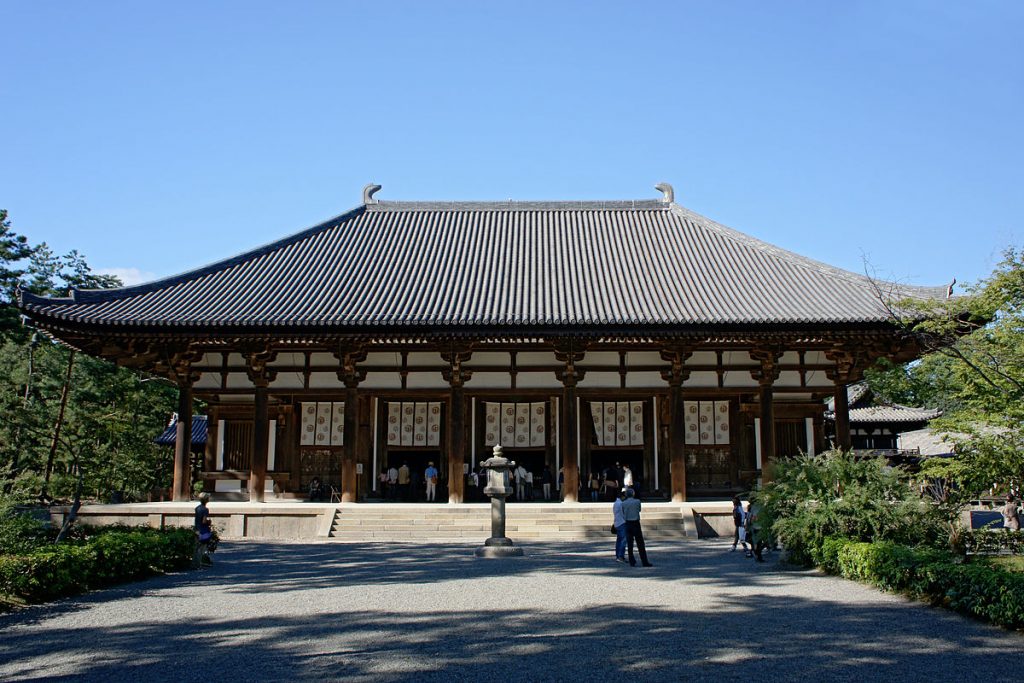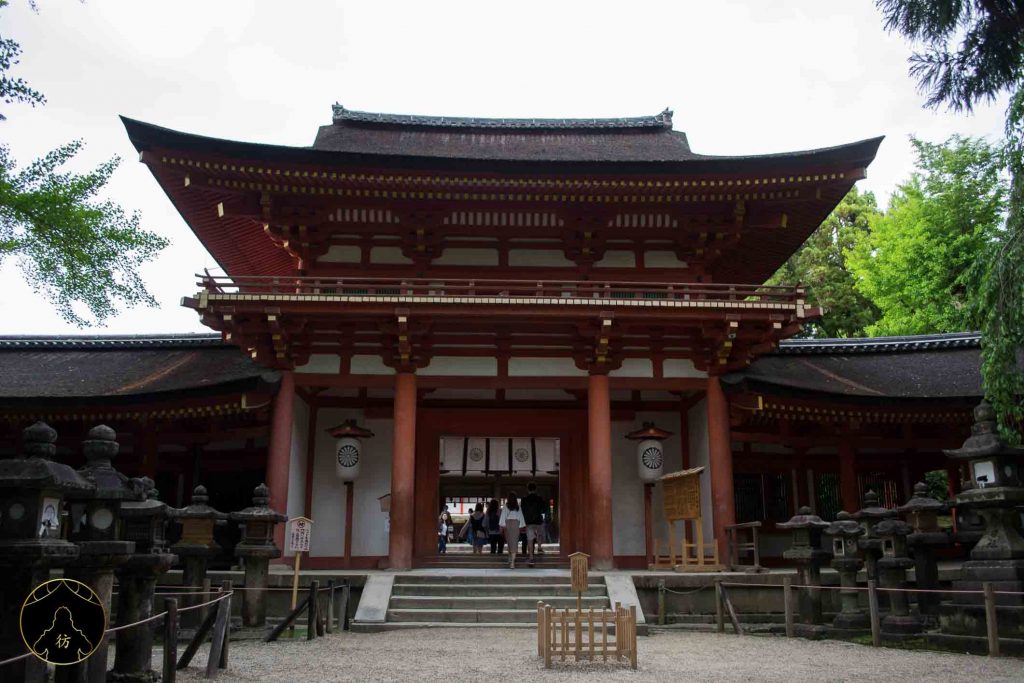Today I’m taking you to one of the most popular and liked destinations in Japan! You guessed it, we’re going to Nara, the beautiful city that has cute fallow deer hopping around almost everywhere! Turns out those creatures are not ordinary animals for the people of Nara; they’re sacred beings.
Before listing the city’s best attractions, let’s go over a few essential information first. Here’s how you can get to Nara and where you can stay.
How to Get To Nara
Nara is located in the Kansai region of Japan so it’s pretty close to cities like Osaka or Kyoto. The train is your best option to go to Nara so here are two train trips I recommend you take if you’re coming from either Osaka or Kyoto. They’re rather fast and inexpensive and you will find the exact train routes and timetables on Hyperdia.
How to Get To Nara From Osaka
- Time: 50 min
- Price: 800 ¥ (around $7)

How to Get To Nara From Kyoto
- Time: 45 min
- Price: 710 ¥ (around $6.50)

Don’t forget that both of those trips are covered by the JR Pass.
Where To Stay in Nara?
Ryokan in Nara
If you’re looking for the most authentic of experiences when it comes to accommodation in Japan, you should opt for a ryokan. Ryokan are traditional hostels where you will be surrounded by the complexity and the abundance of the Japanese culture. So if you find yourself in Nara, I recommend you try the Wakasa Annex. It’s designed in the traditional Japanese way and features a great outdoor bath.
It’s also close to the major attractions of the city but not too close if you’re wondering whether you should stay away from urban areas or not. It’s simply close enough to offer the calm and tranquility you need.
If you want more ryokan recommendations in Nara, have a look at this blog post: Ryokan Nara.
Nara Hotel
Nara Park Hotel is another alternative that is a bit far away from the city parks but offers a great onsen and a big swimming pool. It’s a great hotel to relax and unwind.
Hostels in Nara
Yuzan Guesthouse is a great place to stay if you’re on a budget. It’s somewhere between Nara’s railway station and the city parks. It’s where I stayed when I visited Nara. I particularly liked the shared lounge; it was a very comfortable space that I liked working and blogging in. It’s also where I started writing this blog post by the way.
You can stay at Yuzan Guesthouse for around $25 per night (dorm room rate) which is a fairly decent price if you ask me. Make sure to book you spot in advance though; it gets full pretty quickly.
The 8 Best Things To Do In Nara
Once you’ve decided where you want to stay in Nara, here are a few ideas to help you plan your trip. We’re not heading straight to Nara’s tourist area, we’re listing three great must-visit temples first! 😉
- Horyuji Temple
- Yakushiji Temple
- Toshodaiji Temple
- Kofukuji
- Isuien Garden
- Todaiji Temple
- Nigatsudo Hall
- Kasuga Shrine
1. Horyuji Temple

A Japanese friend recommended I visit Horyuji Temple so I did and it was great! To go there, head to Horyuji station and walk north for 15 minutes. Horyuji is not so popular among tourists so it doesn’t get crowded at all.

It’s a Buddhist temple that was built during the 7th century. It houses some of the oldest wooden buildings in Japan. You can tell it’s an ancient temple by the deep brown color of the buildings. Here’s the temple’s five-storied pagoda:

I should have mentioned that access to the temple is free unless you’d like to go inside the building. If you do, you need to pay around $14, but walking around the free access area is also interesting if you’re on a budget.
2. Yakushiji Temple

If you get back on the train and stop at the Nishinokyo station, you can visit the great Yakushiji temple which is a couple of minutes away from the station. No free access area this time though, you’ll need to pay around $10 to enter.

The Yakushiji temple has recently been renovated but it’s nonetheless one of the oldest in the entire country. Built during the 7th century, this Buddhist temple is dedicated to the Buddha of healing and medicine, Yakushi Nyorai.

I really liked Yakushiju because it’s a huge temple and there are many buildings you can visit with lots of gorgeous Buddha statues.

It’s also not very popular among tourists so apart from a few Japanese grannies in very good shape, you’ll have the temple all to yourself!

3. Toshodaiji Temple

From Yakushiji, you can walk up north along this beautiful river to Toshodaiji Temple.

You need to pay around $6 to enter the temple, if I remember correctly.

From there, you can visit Nara’s parks if you take the train from Amagatsuji Station to Kintetsunara Station.
4. Kofukuji

You will come across Koukuji as soon as you get to Nara. It’s located 5 minutes away from Kintetsunara station. It’s a very nice temple that has a magnificent five-storied pagoda and cute little statues like these:

5. Isuien Garden

Tourists who come to Nara love Isuien. I didn’t have enough time to visit it but apparently, it’s worth it! Access to the garden costs around $8.

6. Todaiji Temple

Todaiji is one of Nara’s most popular attractions. Access to the temple costs around $4.50. From this point on, you’ll start to see deer here and there.

As I already pointed out, Nara’s deer are considered sacred animals and this belief is based on a legend according to which the god Takemikazuchi had come to Nara riding a great white deer. They’ve been revered since then and are thought to be the city’s divine guardians. They’re cheeky creatures nonetheless and they’ll stick their tongue out at you if you annoy them!

7. Nigatsudo Hall

Breathe deep and climb up the stairs leading to the Nigatsu-do Hall, it’s worth it! The scenic view of the entire city is breathtaking and you’ll be one of the few tourists up there to enjoy it.

I wanted to linger around before moving on to the next attraction so I went for a little walk in the surrounding forest. Nara is a pretty crowded city so the quiet moments you get to live away from people and in nature are very special. I cannot encourage you enough to do the same and let your wanderlust be your inner guide!

I found this young deer during my solitary stroll. He kept me company for more than half an hour before catching up with his family. It’s one of the best memories I keep from my trip to Nara. 🙂

8. Kasuga Shrine

It was starting to get dark so I got back on track and headed to the Kasuga Shrine. There a literally thousands of stone lanterns lining the way all around the temple…

…which makes the whole setting look pretty mystical as night begins to fall.

It was a pretty busy day in Nara, filled with amazing discoveries and beautiful landscapes. If you’re going to plan your day as I did, you might need to start early enough in the morning to make the most of your day so be ready to start at 9AM at least. You’ll also need a pair of comfortable shoes if you’re going to do a considerable amount of walking throughout the day, and water of course. Make sure to drink enough water to avoid cramps, I had my fair share of those!
And don’t forget to say goodbye to those beautiful creatures before leaving!

See you all around,
MF









I have a lady friend who would love a shika koro-koro also, but neither of us has any hope of ever paying the fare from Minneapolis, Minnesota, to Nara. Would someone please help us out with this? Obrigato.
If I could, just once, go anywhere on Earth, I would go to Nara. Deer are indeed heavenly messengers, but no other place recognizes their status quite so fully. Unfortunately poverty mandates that I shall never go to Kofukuji and thank Takemikazuchi-no-Mikoto for bringing us this wisdom. But Iwouldlove to have a shika koro-koro if I could buy one on line. In fact, I have a friend who would enjoy a memento of Nara and its deer also.